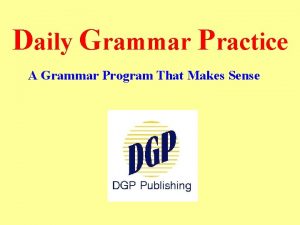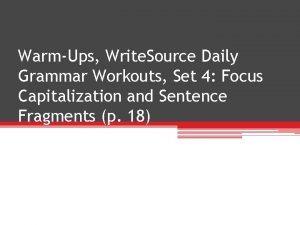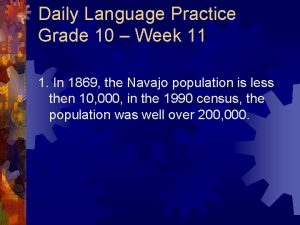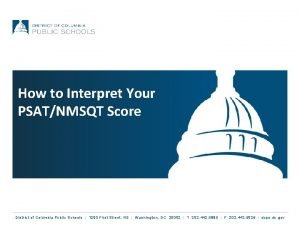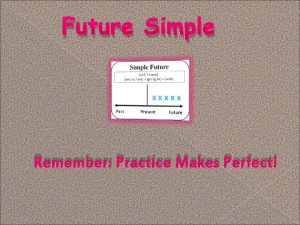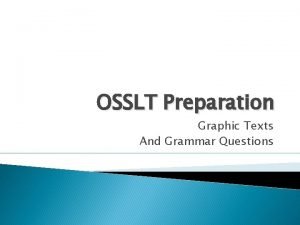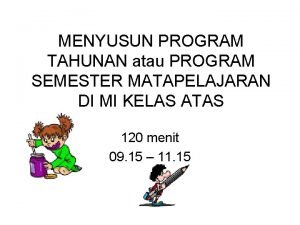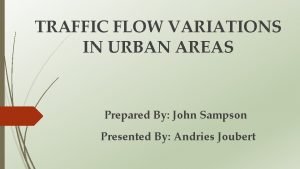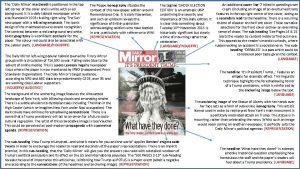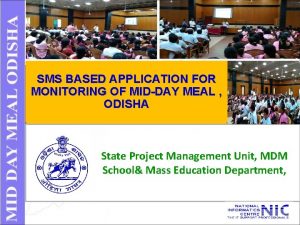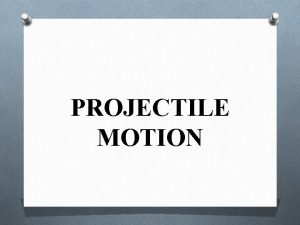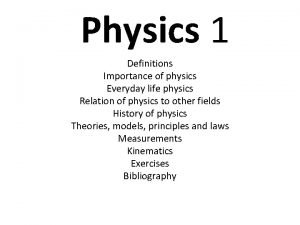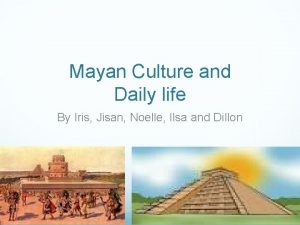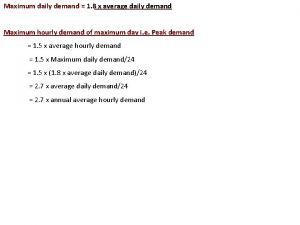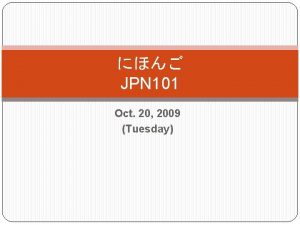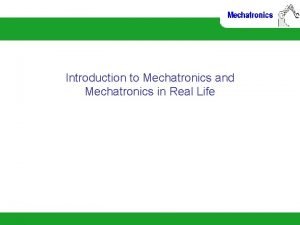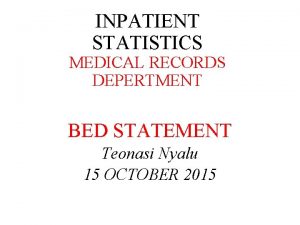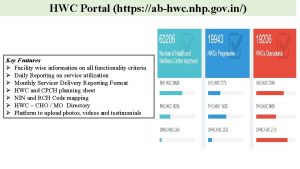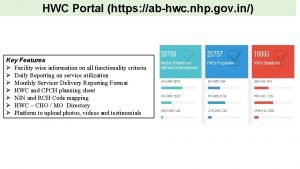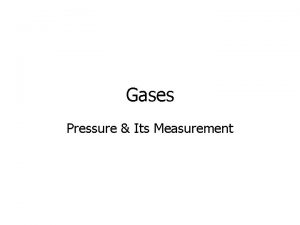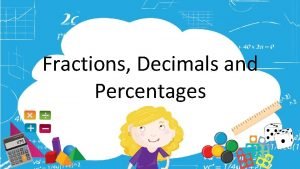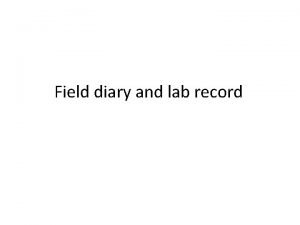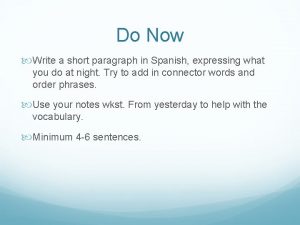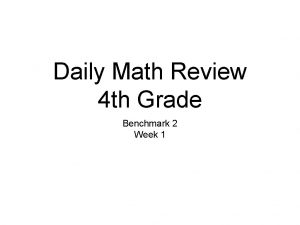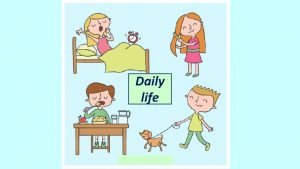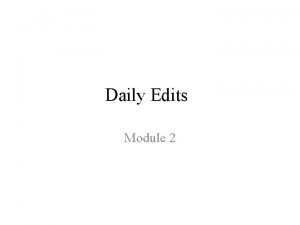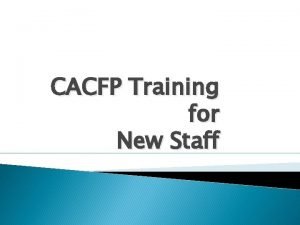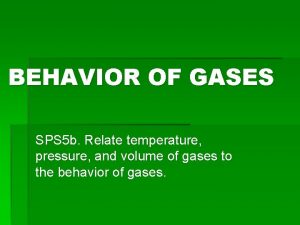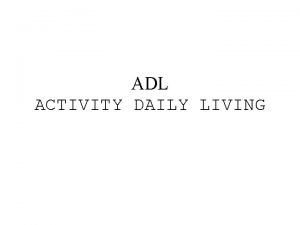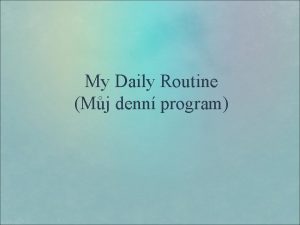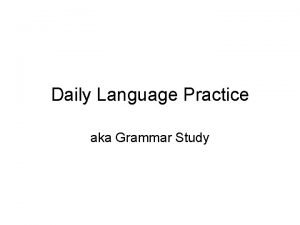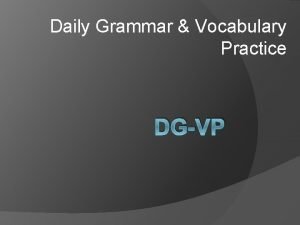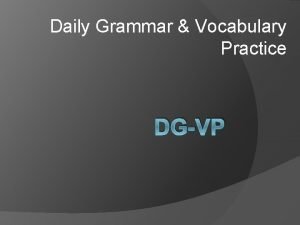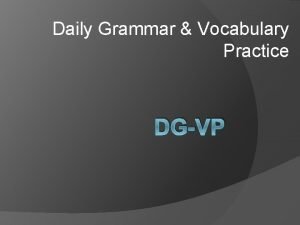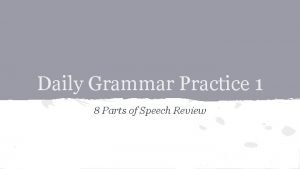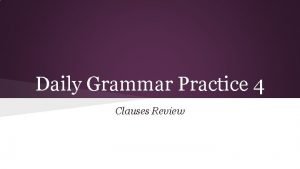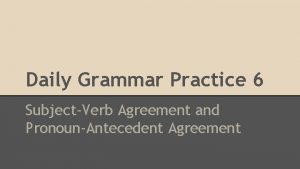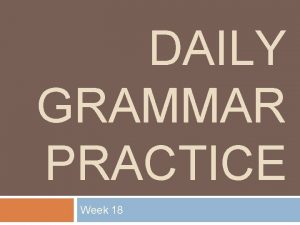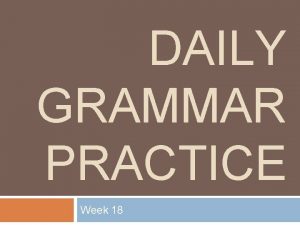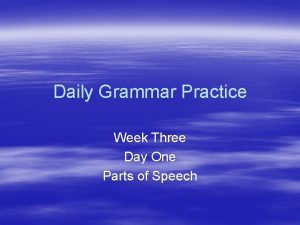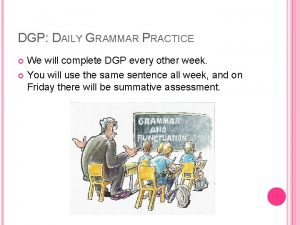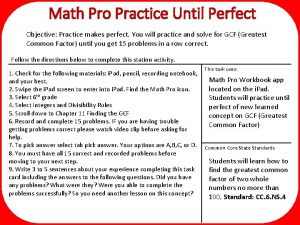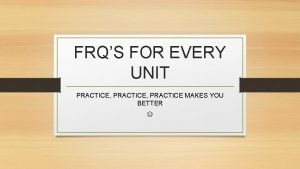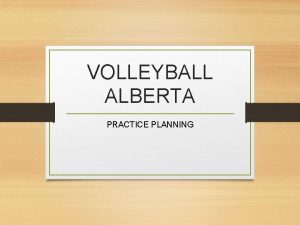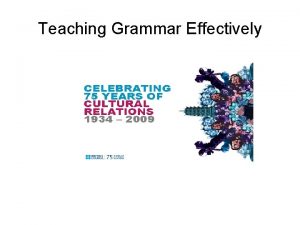Daily Grammar Practice A Grammar Program That Makes
































![ind adj dep [we read the novel the giver which was ][ ] [ ind adj dep [we read the novel the giver which was ][ ] [](https://slidetodoc.com/presentation_image_h/355a569a4361b10d760f1a92f6a4d89f/image-33.jpg)















































- Slides: 80

Daily Grammar Practice A Grammar Program That Makes Sense

Why Grammar? • Colleges and technical schools say that students aren’t prepared for the demands of academic writing.

Ezarik, M. (2003). Survey: K-12, higher ed grammar disconnect. (Curriculum. Update: The latest developments in math, science, language arts and social studies). District. Administration, 39(7), 46.

Why Grammar? • Business leaders complain that employees can’t write grammatically correct documents. • We expect students to edit for grammatical and mechanical errors, but they can’t apply what they don’t understand.

Why Grammar? • In order to help students write better and write correctly, we must all share a common lingo, and that lingo is grammar.

lie rise sit intransitive

Why Grammar? • A student who understands the nuts and bolts of a language can use that language more effectively. • Students need to know grammar concepts for standardized tests such as exit exams and the SAT.

George Hillocks and Michael Smith (1991) argue that “the teaching of school grammar has little or no effect on students” and that grammar instruction wastes valuable time that could be better spent on writing instruction. Hillocks, G. , Jr. , & Smith, M. W. (1991). Grammar and usage. In J. Flood, J. M. Jensen, D. Lapp, & J. R. Squire (Eds. ), Handbook of research on teaching the English language arts (591 -603). New York: Macmillan.

Why Daily Grammar Practice? • Works like a daily grammar vitamin

The Vitamin Analogy • Learning through grammar unit: taking a whole bottle of vitamins at once. • Learning grammar in context or through daily correct-a-sentence: taking random vitamins at random times but not getting a multi-vitamin every day. • Learning through whole language: eating vegetables and hoping you get what you need.

The Vitamin Analogy • Learning grammar by trying to make it “fun”: eating candy • Learning grammar through DGP: getting a good multi-vitamin every day

Why Daily Grammar Practice? • • Is more effective than other daily programs Is effective at every grade level Is effective for every ability level Is effective for English Language Learners

Research on the teaching of grammar to students learning a second language suggests that grammar “provides rules and general guidance that facilitate better understanding of the structures of the target language” (Gao, 2001). Gao, C. Z. (2001). Second language learning and the teaching of grammar. Education, 122(2), 326 -336.

Why Daily Grammar Practice? • Is easy to incorporate into curriculum • Takes less time than traditional, less effective methods

Rei Noguchi (1991) states that teachers should “make more time available for other writing activities by making less grammar do more. ” Noguchi, R. R. (1991). Grammar and the teaching of writing: Limits and possibilities. Urbana, IL: National Council of Teachers of English.

Why Daily Grammar Practice? • Forces grammar concepts into long-term memory.

In order to apply skills that they have learned, students need to know the skills on a subconscious level. To achieve this understanding, they “must engage in practice that gradually becomes distributed, as opposed to massed” (Marzano, Pickering, & Pollock, 2001). Marzano, R. J. , Pickering, D. J. , & Pollock, J. E. (2001). Classroom instruction that works: Research-based strategies for increasing student achievement. Alexandria, VA: Association for Supervision and Curriculum Development.

Why Daily Grammar Practice? • Enables learners to apply grammar concepts to their writing • Follows a logical progression at each grade level and from first grade through college • Breaks concepts into small parts while helping learners to see how all parts work together

Students “struggle to understand concepts in isolation, to learn parts without seeing wholes” (Brooks & Brooks, 1993). Brooks, J. G. , & Brooks, M. G. (1993). In search of understanding: The case for constructivist classrooms. Alexandria, VA: Association for Supervision and Curriculum Development.

Why Daily Grammar Practice? • Eliminates the need for tedious grammar exercises • Complements all types of writing instruction

The DGP Process • Monday: Identify parts of speech


The DGP Process • Monday: Identify parts of speech • Tuesday: Identify sentence functions

The DGP Process • Monday: Identify parts of speech • Tuesday: Identify sentence functions • Wednesday: Identify clauses and sentence type

The DGP Process • Monday: Identify parts of speech • Tuesday: Identify sentence functions • Wednesday: Identify clauses and sentence type • Thursday: Add punctuation and capitalization

The DGP Process • Monday: Identify parts of speech • Tuesday: Identify sentence functions • Wednesday: Identify clauses and sentence type • Thursday: Add punctuation and capitalization • Friday: Diagram the sentence


Week 27 Monday

1 nom av pron past art n rel pron N hv we read the novel the giver which was 1 nom av av/past prep N cc adv pron past written by lois lowry and then we wrote 3 obj art n prep pron an essay about it

Week 27 Tuesday

s vt do app s we read the novel the giver which was vi op s vt ( ) written by lois lowry and then we wrote do op adv pp ( ) an essay about it adj pp

Week 27 Wednesday
![ind adj dep we read the novel the giver which was ind adj dep [we read the novel the giver which was ][ ] [](https://slidetodoc.com/presentation_image_h/355a569a4361b10d760f1a92f6a4d89f/image-33.jpg)
ind adj dep [we read the novel the giver which was ][ ] [ written by lois lowry and then we wrote ind an essay about it] cd-cx declarative

Week 27 Thursday

W we read the novel the giver which was T____, G written by lois lowry and then we wrote L L , an essay about it.

Week 27 Friday

We read novel (The Giver) the which was written and by we wrote essay n t ou ab an the it Lois Lowry


The DGP Process (Grade 2) • Identify nouns, pronouns, interjections, adjectives, conjunctions, and prepositions. • Identify verbs, adverbs, and subjects • Identify sentence purpose • Add punctuation and capitalization • Write a new sentences based on criteria studied throughout the week

Week 1 Monday

P PP jimmy and i saw jeffs X C new bike

Week 1 Tuesday

A jimmy and i saw jeffs new bike

Week 1 Wednesday

jimmy and i saw jeffs new bike dec

Week 1 Thursday

Jjimmy and i saw jeffs I J ’ new bike.

Week 1 Friday

pronoun, conjunction, adjective, possessive noun, same purpose as this week’s sentence You and Martha read Taylor’s interesting story.


Scope and Sequence for first grade through college based on Common Core Standards

Grade 1 • Monday: Find each noun (common, proper, possessive), pronoun, adjective, interjection, preposition, and conjunction in the following sentence. Use an arrow to show which word each adjective describes. • Tuesday: Find each action verb in the following sentence and underline it twice. Then find the noun or pronoun that is doing the action and underline it once. • Wednesday: Identify the sentence purpose as declarative, exclamatory, imperative, or interrogative. • Thursday: Write the sentence with correct capitalization and punctuation. • Friday: Write a new sentence that includes specific criteria we’ve worked on this week.

Grade 2 • Monday: Identify each noun (type), pronoun, interjection, adjective, preposition, and conjunction in the following sentence. Use an arrow to show which word each adjective describes. • Tuesday: Identify the action verbs or linking verbs and any adverbs in the following sentence. Use an arrow to show which word each adverb describes. Then underline the simple subject once and the simple predicate twice. • Wednesday: Identify the sentence purpose as declarative, exclamatory, imperative, or interrogative. • Thursday: Write this week’s sentence with correct capitalization and punctuation. • Friday: Write a new sentence that includes specific criteria we’ve worked on this week.

Grade 3 • Monday: Identify each noun, pronoun (nominative, objective, possessive, reflexive, indefinite), interjection, adjective, preposition, and conjunction (subordinating, coordinating) in the following sentence. • Tuesday: Identify the simple subjects, verbs (helping, linking, action), verb tense, adverbs, complete subjects, and complete predicates in the following sentence. Use an arrow to show which word each adverb describes. • Wednesday: Identify the clauses (independent, dependent), sentence type (simple, compound, complex), and purpose in the following sentence. • Thursday: Write this week’s sentence with correct capitalization and punctuation. • Friday: Write a new sentence that includes specific criteria we’ve worked on this week.

Grade 4 • Monday: Identify each noun (type), pronoun (personal by type and case, relative, reflexive, indefinite), adjective, conjunction (coordinating, subordinating, correlative), adverb, article, interjection. • Tuesday: Identify each simple subject, complete subject, complete predicate, and prepositional phrase. Then identify the tense of each simple predicate. • Wednesday: Identify the clauses (independent, dependent), sentence type (simple, compound, complex), and sentence purpose (declarative, imperative, interrogative, exclamatory). Then write the sentence with correct capitalization and punctuation. • Thursday: Write a new sentence that includes specific criteria we’ve worked on this week. • Friday: Fill in the blank spaces in the sentence diagram.

Grade 5 • Monday: Identify each noun (type), pronoun (type and case), adjective, verb (type and tense), adverb, article, preposition, conjunction (type), and interjection. • Tuesday: Identify the simple and complete subject, the simple and complete predicate, and any complements, prepositional phrases, and objects of prepositions. • Wednesday: Identify the clauses (independent, dependent), sentence type (simple, compound, complex), and sentence purpose (declarative, imperative, interrogative, exclamatory). Then write the sentence with correct capitalization and punctuation. • Thursday: Write a new sentences that includes specific criteria we’ve worked on this week. • Friday: Use this week’s sentence to fill in the following diagram structure.

Grade 6 • Monday: Identify each word as noun (common, proper, possessive), pronoun (type, case, person), verb (type and tense), adverb, adjective, preposition, conjunction (type), interjection, or article. • Tuesday: Identify sentence parts including subject (complete and simple), complete predicate, verb (transitive or intransitive), direct object, indirect object, predicate nominative, predicate adjective, appositive or appositive phrase, and prepositional phrase (adjective or adverb). • Wednesday: Identify each clause as independent or dependent; identify the sentence type as simple, compound, or complex; and identify the sentence purpose as declarative, imperative, interrogative, or exclamatory. • Thursday: Add capitalization and punctuation including end punctuation, commas, apostrophes, underlining, and quotation marks. • Friday: Fill in the diagram structure using this week’s sentence.

Grade 7 • Monday: Identify each word as noun (type), pronoun (type, case, person), verb (type and tense), adverb, adjective, article, preposition, conjunction (type), interjection, gerund, participle, or infinitive. • Tuesday: Identify sentence parts including subject (complete and simple), verb (complete and simple, transitive or intransitive), direct object, indirect object, predicate nominative, predicate adjective, appositive or appositive phrase, and prepositional phrase (adjective or adverb). • Wednesday: Identify each clause as independent, adjective dependent, or adverb dependent; identify the sentence type as simple, compound, complex, or compound-complex; and identify the sentence purpose as declarative, imperative, interrogative, or exclamatory. • Thursday: Add correct capitalization and punctuation. • Friday: Diagram this week’s sentence.

Grade 8 • Monday: Identify parts of speech including noun, pronoun (type and case), verb (type and tense), adverb, adjective, preposition, conjunction (type), gerund, participle, infinitive, and article. • Tuesday: Identify sentence parts including complete subject, simple subject, complete predicate, verb (transitive or intransitive), direct object, indirect object, predicate nominative, predicate adjective, appositive or appositive phrase, prepositional phrase (adjective or adverb), gerund phrase, infinitive phrase, participial phrase, object of preposition, object of infinitive, and object of gerund. • Wednesday: Identify clauses (independent, adverb dependent, adjective dependent, noun dependent), sentence type (simple, compound, complex, compound-complex), and sentence purpose (declarative, interrogative, imperative, exclamatory). • Thursday: Add capitalization and punctuation. • Friday: Diagram the sentence.

Grade 9 • Monday: identify parts of speech: noun, pronoun (type and case), verb (type and tense), adverb, adjective, preposition, conjunction (type), gerund, participle, infinitive, article • Tuesday: identify sentence parts: subject, verb (transitive or intransitive), direct object, indirect object, predicate nominative, predicate adjective, appositive or appositive phrase, prepositional phrase (adjective or adverb), gerund phrase, infinitive phrase, participial phrase, object of preposition, object of infinitive, object of gerund, object of participle • Wednesday: identify clauses and sentence type: independent, adverb dependent, adjective dependent, noun dependent; simple, compound, complex, compound-complex • Thursday: add punctuation and capitalization: end punctuation, commas, semicolons, apostrophes, underlining, quotation marks • Friday: diagram the sentence

Grade 10 • Monday: identify parts of speech: noun, pronoun (type and case), verb (type and tense), adverb, adjective, preposition, conjunction (type), gerund, participle, infinitive, article • Tuesday: identify sentence parts: subject, verb (transitive or intransitive), direct object, indirect object, predicate nominative, predicate adjective, appositive or appositive phrase, prepositional phrase (adjective or adverb), gerund phrase, infinitive phrase, participial phrase, object of preposition, object of infinitive, object of gerund, object of participle • Wednesday: identify clauses and sentence type: independent, adverb dependent, adjective dependent, noun dependent; simple, compound, complex, compound-complex • Thursday: add punctuation and capitalization: end punctuation, commas, semicolons, apostrophes, underlining, quotation marks • Friday: diagram the sentence

Grade 11 • Monday: identify parts of speech: noun, pronoun (type and case), verb (type and tense), adverb, adjective, preposition, conjunction (type), gerund, participle, infinitive, article • Tuesday: identify sentence parts: subject, verb (transitive or intransitive), direct object, indirect object, predicate nominative, predicate adjective, appositive or appositive phrase, prepositional phrase (adjective or adverb), gerund phrase, infinitive phrase, participial phrase, object of preposition, object of infinitive, object of gerund, object of participle, objective complements • Wednesday: identify clauses and sentence type: independent, adverb dependent, adjective dependent, noun dependent; simple, compound, complex, compound-complex • Thursday: add punctuation and capitalization: end punctuation, commas, semicolons, apostrophes, underlining, quotation marks, colons, dashes, hyphens • Friday: diagram the sentence

Grade 12 • Monday: identify parts of speech: noun, pronoun (type and case), verb (type and tense), adverb, adjective, preposition, conjunction (type), gerund, participle, infinitive, article • Tuesday: identify sentence parts: subject, verb (transitive or intransitive), direct object, indirect object, predicate nominative, predicate adjective, appositive or appositive phrase, prepositional phrase (adjective or adverb), gerund phrase, infinitive phrase, participial phrase, object of preposition, object of infinitive, object of gerund, object of participle, objective complement, subject of infinitive, absolute phrase • Wednesday: identify clauses and sentence type: independent, adverb dependent, adjective dependent, noun dependent; simple, compound, complex, compound-complex • Thursday: add punctuation and capitalization: end punctuation, commas, semicolons, apostrophes, underlining, quotation marks, colons, dashes, hyphens • Friday: diagram the sentence

College Level • Step One: identify parts of speech: noun, pronoun (type and case), verb (type and tense), adverb, adjective, preposition, conjunction (type), gerund, participle, infinitive, article • Step Two: identify sentence parts: subject, verb (transitive or intransitive), direct object, indirect object, predicate nominative, predicate adjective, appositive or appositive phrase, prepositional phrase (adjective or adverb), gerund phrase, infinitive phrase, participial phrase, object of preposition, object of infinitive, object of gerund, object of participle, objective complement, subject of infinitive, absolute phrase • Step Three: identify clauses and sentence type: independent, adverb dependent, adjective dependent, noun dependent; simple, compound, complex, compound-complex • Step Four: add punctuation and capitalization: end punctuation, commas, semicolons, apostrophes, underlining, quotation marks, colons, dashes, hyphens • Step Five: diagram the sentence

Motivating Students to Try • It’s practice, so there’s no pressure. • Your students know they don’t get grammar. • DGP won’t go away like a two-week grammar unit will. • DGP is served in small helpings. • Positive reinforcement works!

Evaluating Student Progress • Pre-test and post-test

Georgia Criterion-Referenced Competency Test • Kedron Elementary School third-graders • T=Total language arts • SCR=Sentence construction and revision • GM=Grammar and mechanics

Georgia Criterion-Referenced Competency Test • Kedron Elementary School students • T=Total language arts • SCR=Sentence construction and revision • GM=Grammar and mechanics

Pre-test and Post-test Results • 44 students tested • Grade 9 pre-test average: 71. 4 • Grade 9 post-test average: 90. 1 (+19. 7) • Grade 10 pre-test average: 88. 7 (-1. 4)

Pre-test and Post-test Results • 102 eighth-graders tested • Average pre-test score: 69. 1 • Average post-test score without DGP: 73. 6 (+4. 5) • Average post-test score with DGP: 89. 9 (+20. 8)

Evaluating Student Progress • Pre-test and post-test • Daily sentences


Evaluating Student Progress • Pre-test and post-test • Daily sentences • Application of concepts

Evaluating Student Progress • • Pre-test and post-test Daily sentences Application of concepts DGP quiz


Warnings • You must make DGP a priority every day. • Don’t let yourself get discouraged. • The daily habit of doing DGP will take a couple of weeks to instill. • You must know grammar well to teach it well. • You have to use the lingo when you talk about writing.

DGP Plus: Building Stronger Writers

Super Sentences My friend got a puppy.

No Adjectives Allowed

www. dgppublishing. com dburnette@dgppublishing. com
 Daily grammar practice
Daily grammar practice Phân độ lown ngoại tâm thu
Phân độ lown ngoại tâm thu Block xoang nhĩ ecg
Block xoang nhĩ ecg Thơ thất ngôn tứ tuyệt đường luật
Thơ thất ngôn tứ tuyệt đường luật Thơ thất ngôn tứ tuyệt đường luật
Thơ thất ngôn tứ tuyệt đường luật Chiến lược kinh doanh quốc tế của walmart
Chiến lược kinh doanh quốc tế của walmart Tìm vết của đường thẳng
Tìm vết của đường thẳng Con hãy đưa tay khi thấy người vấp ngã
Con hãy đưa tay khi thấy người vấp ngã Tôn thất thuyết là ai
Tôn thất thuyết là ai Gây tê cơ vuông thắt lưng
Gây tê cơ vuông thắt lưng Sau thất bại ở hồ điển triệt
Sau thất bại ở hồ điển triệt Daily grammar warm ups
Daily grammar warm ups Daily language practice
Daily language practice Psat total score
Psat total score Task 10 practice makes perfect
Task 10 practice makes perfect Mathsduck
Mathsduck Simple future of remember
Simple future of remember Right linear grammar to left linear grammar
Right linear grammar to left linear grammar Characteristics of traditional grammar
Characteristics of traditional grammar Type 0 grammar example
Type 0 grammar example Closure properties of regular languages
Closure properties of regular languages Graphic text examples osslt
Graphic text examples osslt Practice assessor feedback examples
Practice assessor feedback examples Sequential program and an event-driven program
Sequential program and an event-driven program Sebuah program komputer disebut
Sebuah program komputer disebut Program tahunan adalah
Program tahunan adalah Microsoft excel merupakan aplikasi ... *
Microsoft excel merupakan aplikasi ... * Software pengolah angka microsoft office adalah…
Software pengolah angka microsoft office adalah… Ms word
Ms word How to write a diary entry
How to write a diary entry Daily walk around check sheet
Daily walk around check sheet Daily walk around check sheet
Daily walk around check sheet Average daily traffic formula
Average daily traffic formula Average daily traffic formula
Average daily traffic formula The periodic daily rise and fall of ocean water
The periodic daily rise and fall of ocean water Examples of linear expansion in daily life
Examples of linear expansion in daily life Daily meal count sheet
Daily meal count sheet Daily mirror masthead
Daily mirror masthead 5 daily duties of hinduism
5 daily duties of hinduism Mdm sms odisha
Mdm sms odisha Daily routines simple present tense
Daily routines simple present tense How to calculate simple interest with example
How to calculate simple interest with example Applications of raman effect in daily life
Applications of raman effect in daily life Deduce the resultant of two parallel forces
Deduce the resultant of two parallel forces Algebraic expression real life example
Algebraic expression real life example Ssapunjab daily circular
Ssapunjab daily circular Examples of projectile motion
Examples of projectile motion Importance of si units in daily life
Importance of si units in daily life Daily work activities
Daily work activities Mayan daily life
Mayan daily life Maximum day demand
Maximum day demand Managing for daily improvement
Managing for daily improvement Keva daily plus benefits
Keva daily plus benefits Daily routines and adverbs of frequency
Daily routines and adverbs of frequency Examples of mechatronics system in daily life
Examples of mechatronics system in daily life Daily ward state
Daily ward state Ab.hwc.nhp.gov.in.login
Ab.hwc.nhp.gov.in.login Ab-hwc app download
Ab-hwc app download Hwc mo portal
Hwc mo portal Unit of pressure
Unit of pressure Two containers
Two containers Define functional text
Define functional text Fractions decimals and percentages in real life
Fractions decimals and percentages in real life Daily cash expenditures
Daily cash expenditures Differentiate field dairy and lab record
Differentiate field dairy and lab record How to write a paragraph in spanish
How to write a paragraph in spanish Diary entries meaning
Diary entries meaning Daily programme
Daily programme Language
Language Daily oral language paragraphs
Daily oral language paragraphs 3/8 divided by 13/16
3/8 divided by 13/16 Daily life lunch
Daily life lunch Ancient rome recreation
Ancient rome recreation Daily edits
Daily edits Daily dooh
Daily dooh Daily dooh
Daily dooh Daily food cost report
Daily food cost report Daily meal count sheet
Daily meal count sheet Brelate
Brelate Activity daily living artinya
Activity daily living artinya Daily job activities
Daily job activities
